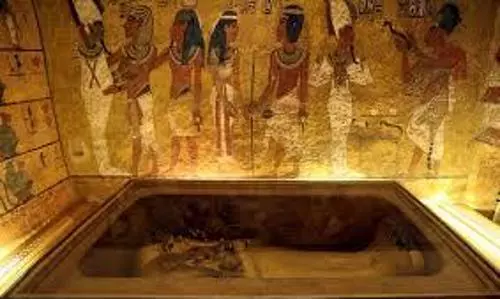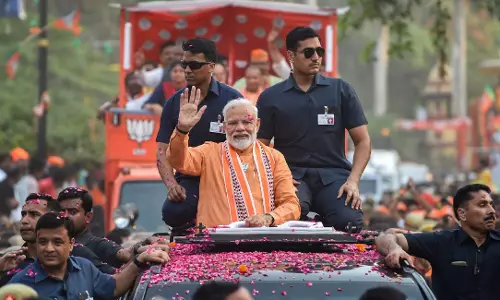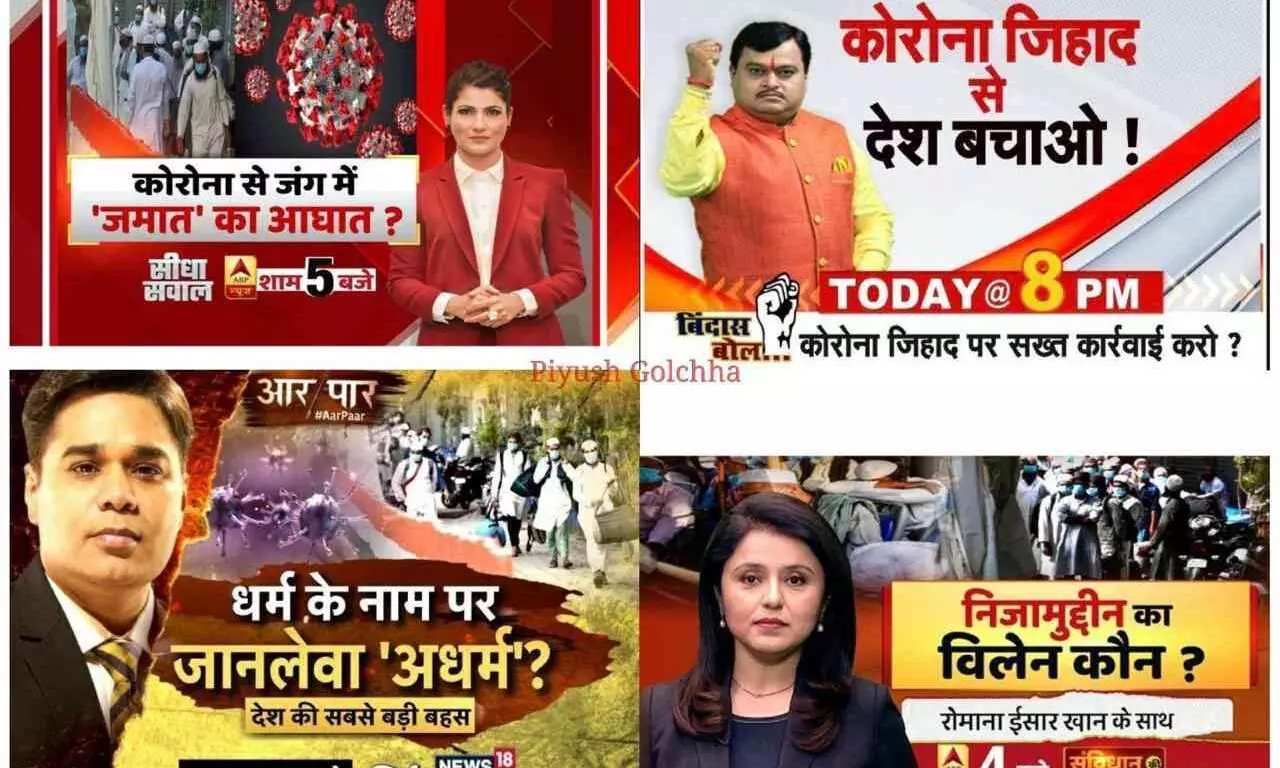
Media mind-set towards minorities
text_fieldsTV news stepped up anti-Muslim rhetoric amid reports of spike in Covid-19 cases. (Image Courtesy : Shashi Tharoor via Twitter)
Media plays an important role in constructing a common viewpoint in the public. In India, for years, the media has worked according to government agenda and the majoritarian politics in creating a common enemy. Since religion, culture, and traditions remain the pillars of a society, the disparities and struggles surrounding it also continue.
The disparities with all sectors of the society, including the economy and public life, automatically create tensions within the society itself which in turn triggersa struggle for equal rights and citizenship values. Globalization has in fact led to a much inclusive cultural system. But the dominant sections of the society, being unable to be eye to eye the democratization process, started turning against them. In India, these majoritarian cultures systematically began the process of exterminating deprived communities including Dalits, Adivasis, Muslims, etc. This process has a long history of setting up an agenda, gradually establishing it by instigating the views through power and influence, then leading to a completely convenient situation, where the process of exterminating can be achieved.
Media influence in communalism
Media plays a role in injecting discriminatory views and agenda into the public, more easily than other channels can. This happens as part of a wider plan of action, where all mainstream media houses are owned and run by the dominant upper caste communities. Unfortunately, the default news which is considered as the ultimate 'truth' by the common public comes from these mainstream media houses. For years, this pattern has been continuing resulting in the nation's vulnerable condition towards conflicts and riots. In this case, journalists, commonly termed as the 'watchdogs' of democracy work for the core of the dominant class, thus paving the way for communal polarization. The systematic isolation of backward communities from media platforms ty helps the dominant section push its agenda more easily.
Anand Teltumbde in his book The Persistence of Caste discusses the corruption in the media platforms. He quotes from the 2001 census that Dalits and Adivasis, who constitute 24 percent of the Indian population have almost no presence in the media sector and so remains remains a minor voice in the newspapers. The book presents another survey of 2006 by Centre for the Study of Developing Societies (CSDS), which shows that 90 percent of the decision-makers in the English Language print media and 79 percent in the television are from the upper castes. There is only 4 per cent OBC and 3 percent from the Muslim community, zero Dalits and Adivasis. This makes clear how the media works in favor of a particular dominant class, and conveniently avoids the marginalized sections. Anand also quotes what Ambedkar has said about media.
Untouchables have no Press
The untouchables, Adivasis, Dalits, Muslims, and all minority sections have been marked and kept under the tag of an 'other'. It is thus portrayed as a group of people who shouldn't get within the mainstream of any sector. And so, media platforms, just like all other dominant platforms of the society, accommodated this 'other' community by providing them jobs in the printing sacks, or as machine operators, or even in the distribution sector and as van drivers. They were forcefully placed away from all the crucial departments so that no influence can be made by them in the media content. In this way, media has been easily turned into mouthpiece of certain political parties or ideologies. The news instigated through these media are capable of instilling concrete ideas among the public. A striking incident happened recently marking the media insensitivity in producing hate towards a particular community is that of Tabilighi Jama'at conference held in Nizamuddin, Delhi, portrayed as a hot spot of Corona Virus.
'Covid Jihad': media setting ground for hate politics
When the world is fighting the Corona Virus, and the country reached its peak with positive cases, India seems to be still after a political agenda of targeting the Muslim community. In the first week of national lockdown itself, on April 1st and 2nd, "Corona Jihad" and "Muslim means terrorist" was on the top of the trending list. The government's incapability in assessing the situation and executing quick actions resulted in a sudden lockdown with no measures taken in advance. But all these miseries were hidden under a shield of Tabilighi Jama'at conference held in Nizamuddin as the prime coronavirus vector.It is a fact that Tablighi Jama'at, an Islamic organization headquartered in Delhi's Nizamuddin, took the pandemic lightly during the initial stage, just as many other Indians including the central ministries did. A program in March 2020 was planned by the Jama'at in its headquarters for which people reached from many parts of the country and even from outside. Since the central ministry announced the pandemic as "not yet an emergency" even in mid-March, the pre-scheduled program wasn't cancelled. Even the Delhi government banned large gatherings only after March 16th. Many assemblies in Delhi including parliamentary sessions continued to be held in Delhi which gave an atmosphere of normalcy around. Having said all this, the Tablighi Jama'at should have acted more responsibly in foreseeing the situationof a disastrous epidemic. But the question remains as to how the Jama'at alone can be blamed for the inaction of central and state governments.
Soon after this, media platforms were abuzz with news portraying Tabilighi Jama'at as a "primary source" of Corona Virus in the country. And from there, more hate campaigns and discussions came through the media showing the organization and the community as the sole spreaders of COVID 19 pandemic, even to the extent of implying that Muslims were deliberately spreading the virus. With that, all government inactions and criticisms melted down, the focus remaining on this. The prejudice set by media was not limited to the members of that particular organization, but the entire Muslim community was targeted. Even related to this context, a massive number of fake news was reported in various news platforms.
Media reports and articles
Zee News, headed by Sudhir Chaudhary, is already known for his anti-Muslim agenda being propagated through his media. And from the start of the pandemic in the county, Chaudhary is one among those newspersons who coined and established the term "Corona Jihad" in the country. The campaign setting up Tabiligi Jama'at as a criminal outfit and its members deliberately conducting a 'Jihad' in spreading the virus, took the headlines of the channel for days. He even spewed bigotry by creating a 'Jihad Chat' in his show Daily News & Analysis. But later in May, the news channel got closed with more than 60 of its reporters and staff testing positive! Chaudhary faces strong allegations for not preventing the virus that spread through the channel's reporters and different news sites.
Suresh Chavhanke, in his channel Sudarshan News program "Bindaas Bol", conducted a discussion titled Corona Jihad se desh bachao (Save the country from Corona Jihad). On March 31, the show opened by asking the Prime Minister to punish the "Jihadis" spreading virus. This went on connecting people who attended the conference and other Muslims to a wider agenda and demanding their arrest and strict action against them.
Arnab Goswami's RepublicTV was also in the forefront alleging conspiracy behind Tabiligi Jama'at's very congregation. At one point in his channel discussion, he questions one of the Maulanas whether it was done deliberately in an attempt to turn Delhi into another Italy. He shouts at the Tablighi members when they were trying to make a point and repeatedly scolds them on their loyalty tothe nation. Goswami asks them whether they were with India or want a separate nation.
India Today came with a "sting operation" titled 'Madrasa Hotspots' with news director Rahul Kanwal claiming that two madrassas (Islamic educational institutes), one in Delhi and the other in Greater Noida, were hiding children in violation of the lockdown. The report also links the madrassa teachers with the Tabilighi conference. It further accuses that the institution works without social distancing norms.
The New Indian Express in a report analyzing Tabilighi Jama'at soon after the outbreak of virus, claimed that the organization has a "deceptive exterior to invite innocent and idealistic young Muslims into an ideological line that ultimately turns them into terrorists". It further says unless "the menace is outlawed, innocent Muslims attracted by its cosmetic exterior of Koran cannot be saved from becoming carriers of Kalashnikovs and makers and throwers of lethal bombs."
A news item showed Muslims in Nizamuddin as licking utensils in order to spread the virus. The video of some people after eating their food, licking plates was widely shared as Muslims purposefully spreading COVID through their saliva. Some captions even titled this as happening at Nizamuddin, connecting it with the Tabilighi conference. Later, it transpired that it was an old video of Bohra community, who would not waste even a grain of food, but eat all of it from the plates. The video was taken by a committee to teach children eating in this manner.
Along with various mainstream news channels, print media and online platforms have also triggered the communal card in the wake of the pandemic. Right on the onset of the pandemic, spurious terms such as "Nizamuddin Idiots", "Nizamuddin terrorists", "Green Corona Virus" etc. were used by to link the virus spread with Muslims, naturally targeting the community and provoking attacks on them.
Anti-Dalit bias in media
If Islamophobia has been a national agenda carried out by the media, then the case of Dalit – Adivasi- Bahujan communities is also not different since they too have least representation in these platforms. A research project conducted by News Laundry and Oxfam, between 2018 October and 2019 March, says that three out of every four anchors in flagship debates on TV were upper caste, not one Dalit or Adivasi or OBC. Anand Teltumbde's book The Persistence of Caste itself is based on the case of the Khairlanji Massacre of 2006, and how media reacted to it. Four members of a scheduled caste, in the village of Khairlanji, Maharashtra were murdered by the politically dominant class of the locality. Surekha Bhaiyalal of the Bhotmange family, belonging to a scheduled caste, lodged a complaint over a land dispute against members of the politically dominant Kunbi caste. The next day, Surekha along with her two sons and daughter were hacked to death. The women were even paraded naked in public and sexually assaulted before being killed. But as Teltumbde puts it, no mainstream newspapers covered the story. But they did laterby giving it an adultery angle, following the police narrative about the issue which was clearly without investigating the crime. And such reports hid the facts in such a way as to leave no sympathy in the readers for the victims. When Dalit protests rose post- Khairlanji, media again failed to present the truth and highlighted it as "nuisance" caused by the agitators.
Violence which took place against the minorities have been covered with the lowest prominence, often giving the reports a twisted angle supporting the culprits. Gradually, these marginalized sections were reduced to an "other", tagged as a trouble-making lot who deserves the atrocities taking place against them. The false alarm created against the migrant laborers by the media during lockdown is a recent example of this trend. Instead of reporting the devastating journey of laborers to their hometowns, some media portrayed them as the carriers of Corona Virus.
Another case of anti-Dalit minority bias of the media was of the Bhima Koregaon incident, where several activists – including Varavara Rao, Vernon Gonslaves, Arun Ferreira, Sudha Bhardwaj and Gautam Navalakha- were arrested and harassed under accusations of conspiracy regarding Bhima Koregaon violence of 2018. The charges on the activists were highlighted by the mainstream media, framing them with the term "Urban Naxals". Debate platforms of these mainstream media houses serve as the forum to decide whether they "nationals" and "Anti-nationals". Loud anchors of 'godi media' (a term coined by Ravish Kumar, referring to media advocating right-wing fascist agenda) work as hatemongers of casteist–Islamophobic-racist ideologies.
Despite having a gradual change over the period, even reel industry remains pretty much insensitive towards casteism. Anubhav Sinha's movie Article 15, which depicts the Dalits' lives in rural India oppressed under the power relations of the state and caste system, gives out a 'savarna savior' in it. Similarly, the recently controversial web series – Pataal Lok – directed by Avinash Arun & Prosit Roy, also fails to bring out a prominent Dalit character. The story exploring the darker world of lower caste society yet could not break the norms of the media industry by having a Dalit as the protagonist. Or even if they tried to, the characterization of Dalits and oppressed communities is not loud enough to catch attention as that of the dominant class.
The common scapegoats of nationalist media agenda
Rene Girard, one of the most renowned literary critics, in his book Scapegoat discusses the idea of "persecution" being a phenomenon that occurred as a result of collective violence. According to Girard, scapegoating was always a part of the society, as a habit to prevent greater social evil. Finding a victim and counting it as a 'sacrifice' for the larger unity and benefit of the society or world, is the common idea followed by this. But modern warfare establishes a totalitarian idea that all the 'enemies' have to be exterminated. Girard argues that the threat of violence leading to social collapse can result in a spontaneous transformation of violence of all against one thereby buildingcollective unity. This reaches a stage where a common understanding develops as the death or extermination of the victim (scapegoat) is necessary for the reintegration of social harmony and existence. And for this, the victim cannot be considered innocent. For the act of collective violence, there should be a level of unconsciousness. The whole process takes place without any proper reason, but still that won't be discussed or analyzed. Girard says that "Persecutors do not realize that they chose their victim for inadequate reasons, or perhaps for no reason at all".
Indian media knowingly or unknowingly support a similar kind of 'scapegoating' agenda. For years, a general consciousness works in Indian society, which terms the Muslim community as 'invaders' and 'foreigners', who from the beginning has destroyed the 'ethnicity' of the country. The fascist agenda to exterminate the community gets entrenched by creating such an atmosphere, where the society automatically believes that Muslims are a threat and need to be eliminated. As part of this, Indian media reduces the community into a Muslim 'other', who is a "terrorist", who conducts "jihad", and works against the nation. This 'other' portrayed by the nationalist media through its continuous reporting of fake news and agenda, gradually convinces the society that they are criminals. With this, even the lower sections of the society who are also prey to fascism, start supporting the exterminating process of Muslims. This happens because a 'common enemy' is created and made to appear as a 'threat' to the nation.
The death of an elephant in Kerala, in May last week, is just another case witnessing this agenda. Through an error, the place of incident got easily transformed from Palakkad to Malappuram- a Muslim majority district- by certain sections of media. And this led to the spontaneous reaction of Maneka Gandhi quoting Malappuram as the "most violent district". The whole issue clearly articulates how media plays the role in spewing hatred towards minorities thus paving way for conveniently implementing the fascist agenda.
At the same time, through conveniently ignoring the lower caste sections of India – Dalits, Bahijans, Adivasis – the agenda of power equations between the state and the dominant class also gets pronounced. The idea of reducing these sections to a state of 'impurity' is carefully injected into the society by media groups. Atrocities against them are twisted, making the victims fully responsible for whatever that happened. By portraying them often as 'violent-uncultured mob', media draws a public opinion justifying the atrocities.
Indian media thus act in a complete insensitive manner towards caste-religious discrimination. In fact, it plays a crucial role in concreting the nationalist agendas of religious split and discrimination. It turns deaf to the criminal tendencies of both the government and the dominant class towards the marginalized sections. It easily paves way to establish this by conveniently hiding the sufferings and struggles of minorities.
(The author is a Mass Communication PG Student at English and Foreign Language University (EFLU), Hyderabad)
























